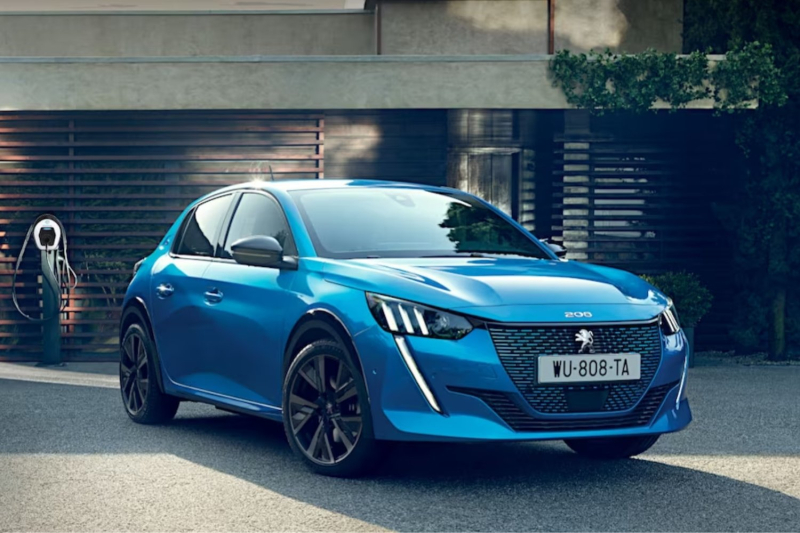
© Peugeot
With an increasingly varied offering, it is difficult to navigate the French automotive landscape. Electric, hydrogen, hybrid, gasoline, diesel… between engines, brands, dimensions, choosing your car has become more and more complicated. But then what is the French's favorite car model ? The figures reveal some criteria allowing us to create a rough portrait of the typical vehicle of the French driver .
A diesel car
With nearly 39 million vehicles plying the roads of the’ In France, the French automotive landscape remains largely dominated by combustion engines. Diesel, although losing speed, still powers 53% of cars in circulation. In total, 93.4% of vehicles are run on gasoline or diesel. A figure which contrasts sharply with European ambitions aimed at putting an end to sales of new thermal vehicles by 2035.
Faced with this reality, electric and hybrid cars are timid newcomers. They represent only 3.2% of the current stock. However, their share in new vehicle sales is increasing significantly, reaching 13.1% of registrations in 2022. This growth is stimulated by attractive government incentives, such as the ecological bonus for the purchase of vehicles. ;a new electric vehicle. Despite these efforts, the road to total electrification of the fleet still seems long and strewn with obstacles.
A city car
French body preferences reveal a penchant for versatility. City cars dominate the market with 30% of the fleet, attractive for their maneuverability in an urban environment and their economic dimension. They are followed by sedans, representing 15% of vehicles, appreciated for their long-distance comfort. SUVs complete this top three with 10% of the fleet, offering a compromise between interior space and a feeling of safety. This distribution reflects a subtle balance between urban practicality, road comfort and family versatility.
An old “car”
The major challenge facing the French automobile fleet lies in its aging. The average age of vehicles now reaches 10.8 years, a figure that has been constantly increasing in recent years. Even more worrying, 30% of vehicles in circulation are over 15 years old, and 13% are even over 20 years old. This increased longevity, accentuated by the drop in sales of new cars, considerably complicates the transition to cleaner and more efficient engines.
200% Deposit Bonus up to €3,000 180% First Deposit Bonus up to $20,000The drop in registrations of new vehicles, which fell by 3% between May 2023 and May 2024, and by almost 27% over the last five years, contributes to this aging phenomenon. The reasons for this disaffection with new things are multiple: declining purchasing power, economic uncertainties, but also a wait-and-see approach to technological and regulatory developments.
In any case, the typical car of a French driver would therefore be an old diesel city car about 11 years old. The transition to 100% electric promises to be complicated.
A difficult transition
Faced with this observation, car manufacturers, through the voice of Luca de Meo, CEO of Renault and president of the European manufacturers' lobby (ACEA), are pleading for a more flexible approach. “To go from 10% market share for EVs to 100% in twelve years is really very complicated”, he says. And to campaign for an extension of the deadline or a downward revision of the quota of 100% of electric vehicles in dealerships in 2035.
This position is in contradiction with that of Ursula von der Leyen, newly re-elected President of the European Commission, who reaffirmed her desire to maintain the timetable for the transition of the European automobile fleet to electric. On the other hand, she agreed to re-study the case of e-fuels.
To accelerate the transition, the French government has put in place various incentive measures. In addition to the ecological bonus mentioned above, conversion aid for replacing old polluting vehicles with cleaner models is offered. These initiatives aim to rejuvenate the park while promoting the adoption of technologies that emit less CO2.
Despite these efforts, the transformation of the French automobile fleet remains a long-term process. Consumption habits, attachment to certain types of vehicles and, above all, economic constraints are holding back a rapid evolution towards electric. Furthermore, questions persist about the charging infrastructure, which is still insufficient to fully reassure potential buyers of electric vehicles.
- 93.4% of French cars still run on combustion engines, despite the increase in sales of electric vehicles
- City cars, sedans and SUVs dominate the landscape French automobile, reflecting a taste for versatility
- The automobile fleet is aging considerably, with an average age of 10.8 years, complicating the transition to cleaner vehicles
📍 For miss any news from Presse-citron, follow us on Google News and WhatsApp.
[ ]

